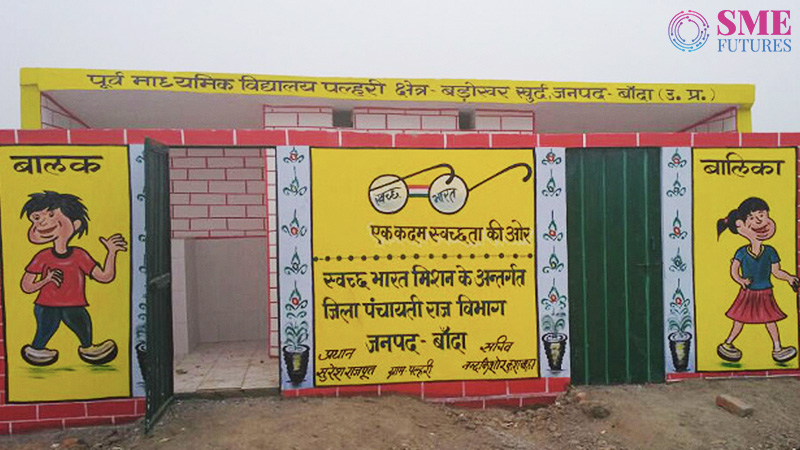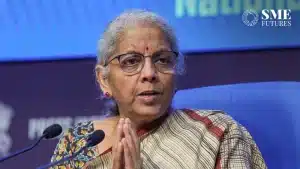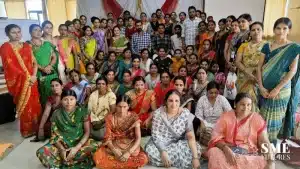Indians owned more phones than toilets in their houses at one time. This however is not so great fact about world’s largest democracy. This was the time when Delhi was hosting commonwealth games, Saina Nehwal had clinched Swiss open title, Anna Hazare was fasting for Lokpal Bill, and F1 race had come to Buddha International circuit.
Another disturbing fact is that one third of world’s population which is nearly 2.4 million people lacks access to safe sanitation. This leads to open defecation which is a largest health and environmental menace across the world. Furthermore, India was contributing to over 60 per cent of the world’s open defecators, according to Parmeshwaran Iyer, Former Secretary, Department of Drinking Water and Sanitation.
Open defecation initiates a vicious circle of diseases and malnutrition. Diarrhoea caused by poor sanitation is one of the leading diseases among others which include cholera, typhoid, dysentery, hepatitis, and polio. Diarrhoea alone accounts for thousands of deaths every year. It also exacerbates malnutrition which causes childhood stunting.
In India, unsafe sanitation practices were responsible for over 20 per cent of all communicable diseases. In addition to this, 500 children died from diarrhoea related issues every day. Hence, to keep a population of 1.3 billion people healthy was a herculean challenge. It is still estimated that inadequate sanitation jeopardizes 6.4 per cent of India’s gross domestic product (GDP).
But all this changed in 2019, when Prime Minister Narendra Modi announced success of the toilet revolution on the 150th birth anniversary of Mahatma Gandhi. Rural India was declared open defecation free (ODF) under the Swachh Bharat Mission which was started in 2014. Today, India has been witnessing an unprecedented revolution in the arena of sanitation.
History of toilet usage in India
One of the most ancient civilizations of India, Indus Valley knew the significance of hygiene. Harrapans were known for their toilets and the advanced drainage system. Sulabh’s manual on history of toilets’ states that excavations in Harappa and Mohenjo Daro revealed a highly developed drainage system where wastewater from bathrooms as well as toilets in each house flowed into the main sewer. However, India had its first wet toilets in 2500 BC.
History suggests that toilets (dry ones) re-emerged when people such as traders and invaders entered India. This also gave birth to inhuman practices of manual scavenging done by untouchables. On the other hand, the general public was defecating openly. Even with the entry of Europeans, toilets remained constricted to royalties and aristocrats.
Meanwhile, increase in population and poverty in rural regions were some of the factors because of which sanitation lost its ground as an issue. However, when a report of British Royal Commission revealed high mortality rate due to diarrhoea in 1859, Commission for Public Health were set in each presidency. Under the Military Cantonment Act of 1865, sanitation boards and sanitation police were created to look after issues related to sanitation.
Sadly, even this doesn’t bring any breakthrough for general public. The habits of defecation remained same even with various municipal reforms. As India got independence, the toilet coverage was less than one per cent. This remained a big quandary even when we entered 21st century.
Legislations for sanitation in independent India
Independent India required reforms in various arenas, as every sector was dilapidated. Hence, the first five-year plan that Nehru government formulated for the duration 1951-1956 argued for higher allocation in public health. In 1954, the first Rural Sanitation Programme was introduced. Till the sixth five-year plan, planning commission had realised that sanitation has only worsened. 1981 census revealed that rural sanitation coverage was only 1 per cent.
Central Rural Sanitation Programme 1986
Realising more efforts were required to resolve the existing sanitation conditions, the seventh five-year plan aimed to provide sanitary latrines to 25 per cent of rural households. Large scale financial investments were also made by the government to ensure availability of toilets to individuals earning as low as US$ 75 all throughout the year.
The programme also dealt with the conversion of dry latrines to water-pour flush toilets and construction of village sanitary complexes for women. However, the scheme failed miserably even after fifteen years. As people were still reluctant to use toilets and rural sanitation, the coverage saw an annual increase of only 1 per cent.
Total Sanitation Campaign 1999
A 1998 NSSO survey reveals that as many as 83 per cent of households in rural areas were not using latrines as against only 26 percent in urban areas. Ministry of Health reported that 30 million individuals in rural areas suffered from sanitation-related disease on an average. Hence, failed CSRP paved the way for Total Sanitation Campaign in April 1999.
The sole purpose of this campaign was to bring awareness towards toilet usage and construction among masses. Out of the 138.2 million rural households in India (a 2001 figure), nearly 3.5 million had constructed household toilets by 2007. The survey states, “Over 1,700 women’s complexes and 41,000 school toilets have been built, apart from other support facilities such as rural sanitary marts, at a total cost of just over Rs 2.92 billion.”
Nirmal Gram Puraskar 2003
In 2003, government launched National Clean Village Award to encourage communities for volunteering for the sanitation drive. When all points of consideration are achieved, the president of India rewards the candidates at an annual ceremony. Till the year 2007, this award has been given to 4,945-gram panchayats and 14 blocks, 30 of which were ‘an intermediate tier of elected rural local government.’
This still was not enough. According to the records, 88 per cent of population in India had access to an improved water source but only 31 per cent had access to improved sanitation in 2008. In rural areas where 72 per cent of India’s population lives, the share is 84 per cent for an improved water source and 21 per cent is for sanitation. There is evidence that cultural resistance to changes was one of the main reasons behind this failure.
National Urban Sanitation Policy, 2008
The hard reality was that challenges were rampant. The government therefore came up with this policy to focus on cities and towns. The goal was to provide and sustain adequate health and environmental facilities for all citizens. This was planned with a special attention on hygienic and safe sanitation services for the urban poor and women. To achieve total sanitation coverage in urban areas, government also proposed an annual award scheme for cities.
Nirmal Bharat Abhiyan 2012
At this point, the government was far from the aim to attain ODF status. Once again to achieve 100 per cent ODF and to make village level institutions as main determinants, the TSC was re-launched as Nirmal Bharat Abhiyan. It aimed for safe sanitation for rural India by building toilets by 2015. It also targeted spreading awareness about proper hand-washing behavior. Furthermore, it aimed to lay emphasis on the hygienic handling of drinking water, food, and to properly manage biodegradable and non-biodegradable solid waste by 2022.
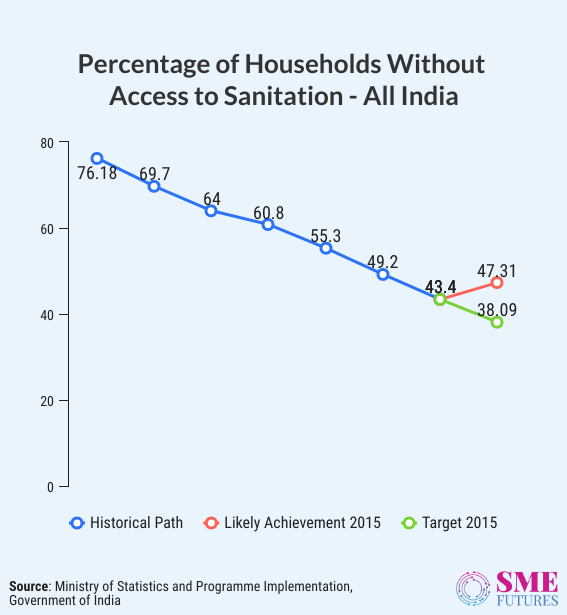
A Comptroller and Auditor General of India (CAG) audit from 2009 to 2014 identified a weak performance against the targets. For TSC, the CAG report said the ministry (water resources, drinking water, and sanitation) released only 48 per cent of the funds demanded by states and 16 states did not release their share of funds during 2009-14.
The report states, “Despite availability of funds of Rs 13, 494.63 crore, only Rs 10, 157.93 crore was spent on scheme implementation during the period of 2009-10 to 2013-14. The unused amount on annual basis varied between 40 per cent and 56 per cent.” Till this time, India did not stop defecating in open. It was found that just below 40 percent of the country’s population had access to a household toilet.

If we look at the statistics of sanitation and toilets in India, the situation was worst before 2014. As per the government data, percentage of households without access of sanitation in 2001 was 63.6 per cent. The access to toilets further decreased to 53.1 in 2011, while it went down to 43.4 per cent in 2014.
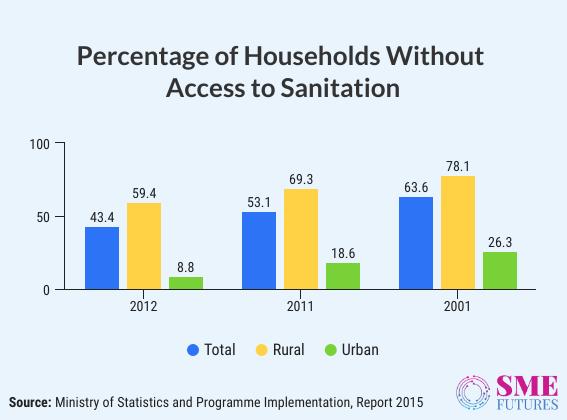
2011 census report published in 2015 further testified this fact. It clearly stated that nearly half of India’s population at that time had no toilet at home. But interestingly, more than half i.e 63.2 per cent of population was the owner of telephones including mobile phones during this period.
According to this report, only 46.9 per cent of the 246.6 million households had lavatories while 49.8 per cent defecated in the open. The remaining 3.2 per cent used public toilets. Despite this dismal statistics, one can say that in more than two decades India’s coverage of toilets has increased from one per cent to 40 per cent due to various campaigns and initiatives.
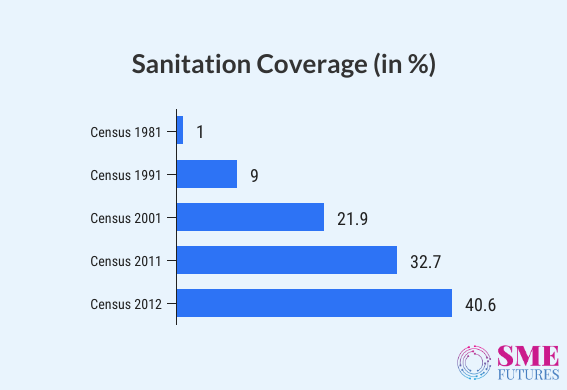
Swachh Bharat Abhiyan 2014
The goal was still far-fetched, and sanitation was indispensable. In 2014, the central government launched the Swachh Bharat Abhiyan (Clean India) campaign on 2 October with a goal of eliminating open defecation and manual scavenging within five years. It intended to attain a Swachh Bharat by the year 2019. The Government of India, in partnership with UNICEF since 2014 has made remarkable strides in reaching ODF targets. 36 states and union territories, 706 districts and over 603,175 villages have been declared open defecation free as of Jan 2020.
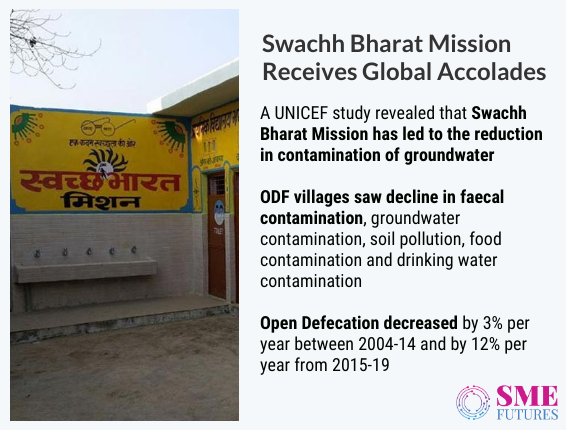
Swachh Bharat Abhiyaan – A movement that ended open defecation
SBM is the most aggressive and largest sanitation drive among other schemes until now. The movement has changed the behaviour of millions of people with respect to toilet access and usage. 500 million people have stopped defecating in the open since 2014. This is a stark decrease from 550 million to less than 50 million today.
In early October 2020, Modi had announced to a crowd in Ahmedabad city that India is now free of open defecation with 110 million toilets built in five years and 600 million people getting an access to them. The data from the Ministry of Drinking Water and Sanitation shows how India’s toilet coverage has climbed to 100 percent.
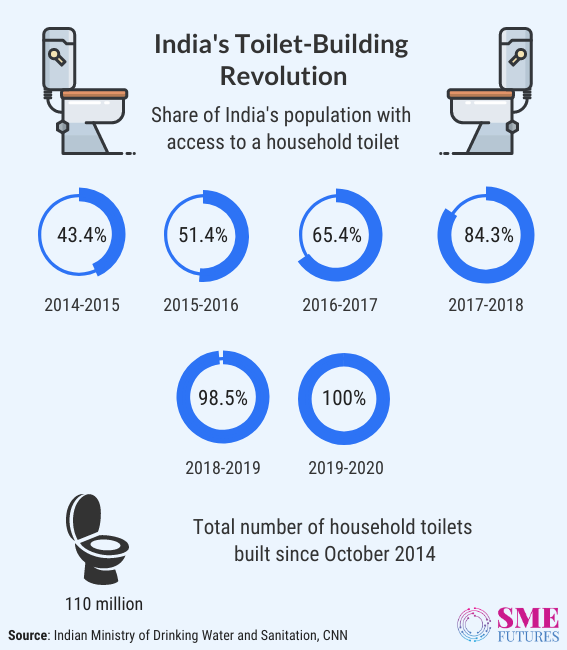
The challenge was enormous, “One of the challenges I faced is getting our own team in the ministry to believe that this was possible. We needed a bit of disruption in the beginning. And then we operated on timeworn formula of PM-CM-DM-VM (village motivator). Once you get them onboard and you make it a mass movement it makes a huge difference,” said Parmeshwaran Iyer, Former Secretary, Department of Drinking Water and Sanitation.
This was a large scale movement and it took an army of Swachhagrahis to deliver the message about importance of sanitation and building a toilet in a household. Over the past six years, over 6.8 lakh swachhagrahis have persuaded lakhs of villages to attain an ODF status.
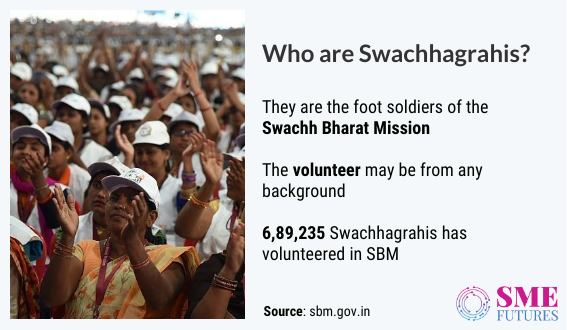
Expenses by government for toilets
The previous government programmes failed miserably mainly due to reluctance of people. However, the government data shows that programmes were not provided enough funds. According to reports, there was insufficient funding for these initiatives since 2012. NBA in 2012-13 and 2013-14, received just Rs 2,500 crore and Rs 2,200 crore respectively.
This was according to the revised estimate against a budget allocation of Rs 3,500 crore and Rs 4,260 crore. According to media reports, the government has spent over US$ 30 billion to improve sanitation across the country. When Modi government launched Clean India mission, the budget allocated was Rs 4,260 crore and this further reduced to Rs 2,850 crore in the revised allocation.
This clearly was insufficient for such a herculean task, while MDWS asked for Rs 8,000 crore. For the next FY, 2015-16 it was just Rs 3,625 crore. This was hiked to Rs 6,525 crore. In 2016-17 budgets, there was a significant increase in the SBM budget. Government allocated Rs 9,000 crore which was again revised to Rs 10,500 crore. This time MDWS asked for Rs 12,500 crore.
According to MDWS’s report to parliamentary standing committee, the requirement was of Rs 14,000 crore and the budget was far away from goal. In the next year’s budget for 2017-18, government had allocated a sum of Rs 14,000 crore, a 33 per cent increase from previous year. Then in FY 2018-19, the budget allocation for Swachh Bharat Abhiyan was Rs 15,343 crore.
For 2019-20 the Rs 9,994 crores was allocated for SBM Rural and Rs. 2,650 crores for SBM Urban. This made it a total allocation of Rs. 12,644 crores for the campaign. For FY 2020-21, FM allotted Rs 12,300 crores. There has been a notable decrease after 2018-19 budget. This time around, budget allocation saw a decrease of Rs 344 crores in the Swachh Bharat Abhiyan allocation from last year.
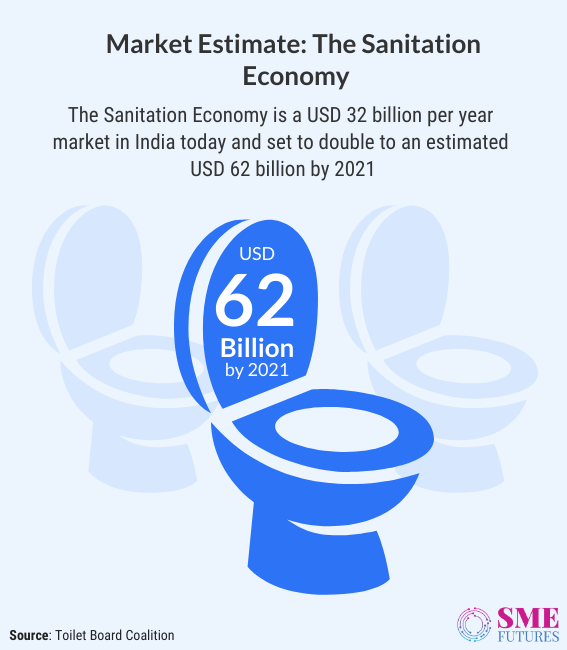
Adding to it, multiple initiatives are being taken to accelerate the movement further. This includes usage of technology. Government is working on latest technologies to transform waste into energy and wealth. Tech solutions will now be used for cleaning faecal matter instead of humans doing it. Apart from this, the government is likely to work towards Galvanizing Organic Bio-Agro Resource–Dhan (GOBAR-DHAN) in rural areas.
Government claims proved wrong by a report
In 2019, government claimed the success of sanitation revolution and clearly the Swachh Bharat Mission had gained so much. But revelations of a report by National Statistical Office (NSO) questioned claims announced by the government.
The report named Drinking Water, Sanitation, Hygiene and Housing Condition in India came out in 2019 and contradicted the government’s claims. It was just after a month when PM Modi declared rural India ODF. The report pointed that only 71.3 per cent of rural households and 96.2 per cent of urban households had access to toilets during 2018.
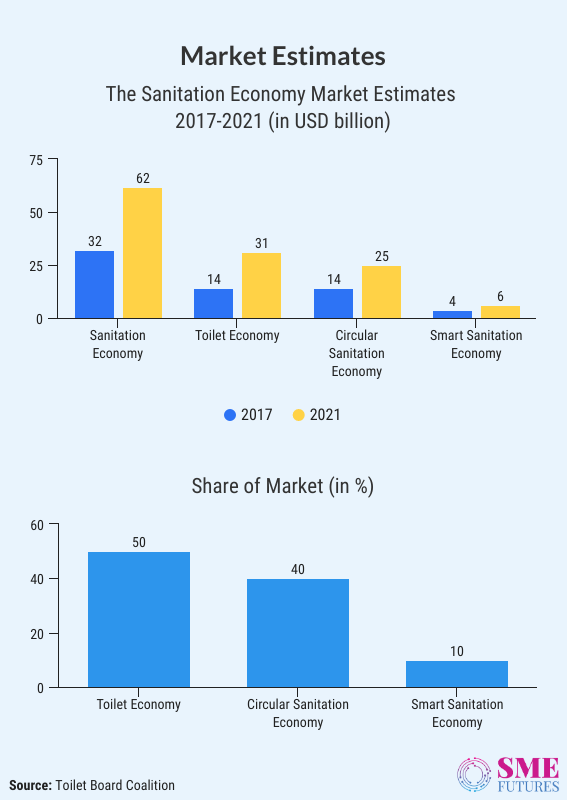
It meant that 29 per cent of rural households and 4 per cent of urban households do not have access to toilets. The data shows that among households which had access to latrine, about 3.5 per cent of household members in the rural areas and about 1.7 per cent of household members in the urban areas never used latrine.
The NSSO data also states that reasons behind people not using toilets built under SBM. The primary reason was inadequate water supply. Among the households using latrine, about 4.5 per cent of households in rural areas and about 2.1 per cent of households in urban areas reported that water was not available in or around the latrine.
The survey further revels that toilets were still deficient in many states which were earlier declared open defecation free. It states that half of rural houses in Uttar Pradesh and Odisha had no access to toilets. Similarly, 22 per cent of households in Maharashtra and Andhra Pradesh both do not have access to toilets. An ODF status was conferred to both states in 2018.
Gujarat which was declared ODF in 2017 contained 24 per cent of households that lacked access to toilets. The survey was conducted between July to December 2018. The report highlighted discrepancies in the responses by respondents. Surveyors also checked people’s awareness about government schemes first before asking questions on access to toilets.
An overview of the sanitation economy
The Swachh Bharat Mission is undoubtedly a revolutionary change in the sanitation narrative of the country. This flagship movement has led to a tremendous increase in the demand for construction and usage of toilets. It has also opened numerous windows of opportunities for stakeholders and sanitary market players. According to an estimation of Toilet Board Coalition, the sanitation economy is set to grow till US$ 62 billion by 2021.
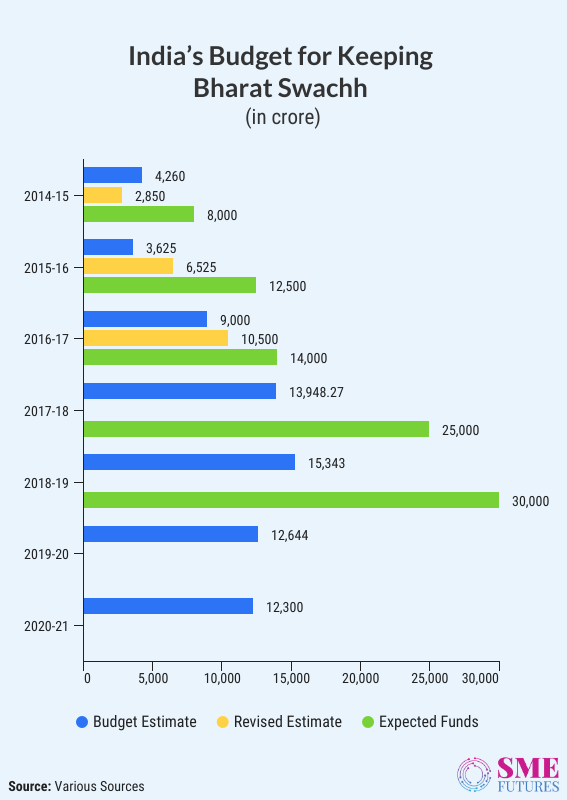
The sanitation economy is a robust marketplace of products and services, renewable resource flows, data, and information that could transform future cities, communities, and businesses. It also presents a vast potential for global economic growth and societal benefits of universal access to smart and sustainable sanitation. It leverages innovative new business models, established businesses with a considerable scale, and disruptive technologies to transform sanitation systems fit for our common future.
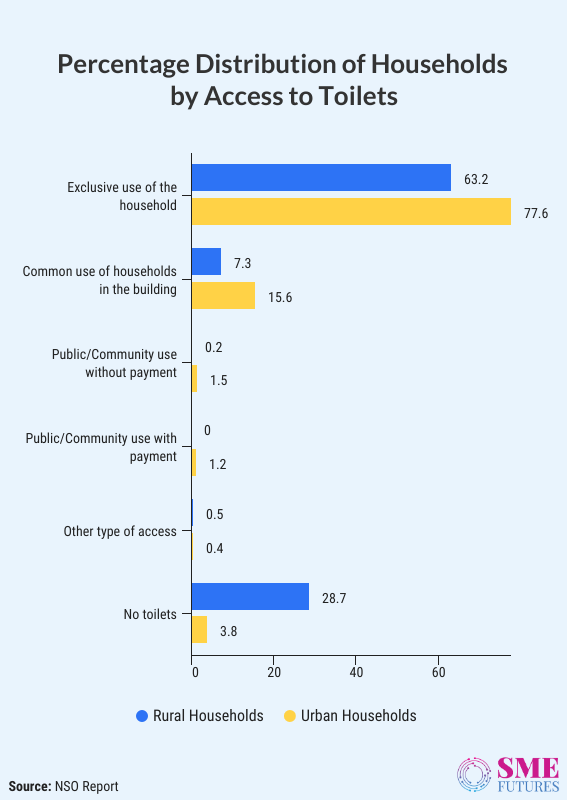
The Sanitation Economy is multi-billion-dollar sector. The scope for application of smart, sustainable business solutions within it is significant and relatively untapped. The combination of estimates for the Toilet Economy, the Circular Sanitation Economy, and Smart Sanitation Economy offer a unique opportunity for growth.
On the other side, various organisations have been actively contributing to improving sanitation infrastructure not only in India but worldwide. Such as, Bill and Melinda Gates Foundation extensively funds new technology interventions in sanitation. In 2011, it launched reinvent the toilet challenge to encourage innovations to improve toilets. Similarly, Google maps now lists over 57,000 public toilets in over 2,300 cities.
In addition to this, new startups such as Garv Toilets, Samagra, Basic Shit, Ekam Eco Solutions, Svadha, and 3S are some of the prominent names in this sector. Currently, the pandemic has enhanced the importance of sanitation and hygiene. The government is now taking the mission to next level and hence the sanitation drive is termed as ODF Plus. Its aim is to work on waste management and changing attitudes towards usage of toilets in India extensively.

